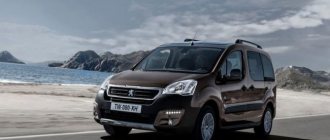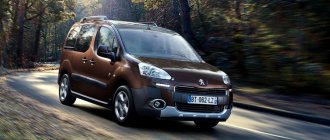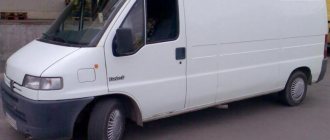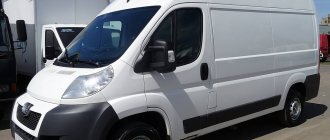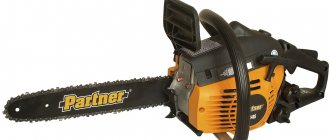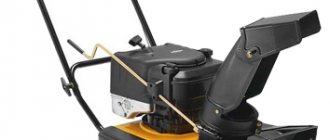Few cars can boast of long-term demand on the world market. Peugeot Partner is one of them. Over its more than 20-year history, the Peugeot heel has gone from a front-wheel drive liter single-volume to a comfortable compact van, ideal for both business and active family vacations and travel. In Russia, the car continues to be popular to this day.
Production history and purpose
Cars similar to the Peugeot Partner have been produced for quite some time. In the USSR, again, there was a similar model - IZH 2715 (“Heel”). However, the French product differed from them in one significant feature. Almost all of its competitors were three-volume with a pronounced operator's cabin (usually a two-seater), an all-metal cargo compartment and an engine compartment. The Peugeot Partner was built according to a different scheme, combining the cargo compartment and the operator's cabin (they were separated only by a mesh). This arrangement turned out to be quite unusual, but it was to the taste of the consumer.
1st generation
The premiere of the first generation Peugeot Partner took place in 1996, when similar models were already on the market. At the same time, the Citroen Berlingo (“twin brother” of the car) debuted. The differences between them were only in the design of the instrument panel and nameplates. In other characteristics, the models copied each other. The Peugeot Partner was assembled at plants in Argentina, Spain and Portugal, and on the Italian market the car was sold under the name Peugeot Ranch.
The French product was a classic compact van with a medium-sized front end and a cargo area. The appearance of the car turned out to be discreet: small elongated headlights, a large hood and a brand logo. The cabin could accommodate up to 5 people, and the rear part could carry up to 3 cubic meters of cargo. It was the versatility and good performance characteristics that became the main advantage of the model.
Peugeot Partner I was produced in 2 modifications:
- 5-seater passenger version;
- cargo variation in the body of a van.
The range of power plants included 1.6- and 2-liter turbodiesels (75 and 90 hp, respectively), 1.4-liter gasoline (75 hp) and 1.6-liter gasoline (109 hp). ) units. Later, a 1.9-liter naturally aspirated diesel engine (69 hp) appeared.
The first generation of Peugeot Partner arrived in Russia a little later and immediately gained great popularity. The model was used by transport organizations and in taxis.
After 6 years of sales, the manufacturer decided to restyling the Peugeot Partner. The updated model debuted in 2002. The changes affected the bumpers, taillights, headlights, grille and interior. The main element of the front part was the clearly defined “kangurin” bumper, painted in body color (on top versions). The headlights became larger and more massive and were combined with lighting devices (turn signals, side lights, high and low beam headlights) into one unit. Large mirror housings and wings added completeness to the look. The “refreshed” version attracted new customers and attracted increased attention.
The restyled version has many progressive devices. The car was equipped with specialized windshield wipers, an upgraded power steering and other innovations. In terms of equipment, the updated Peugeot Partner has become an order of magnitude better than its predecessor. Already in the basic version, the model received airbags for the front passenger and driver.
In 2003, the Peugeot Partner family was replenished with an all-terrain version - the Peugeot Partner Escapade. The car was equipped with plastic arch covers, unpainted bumper corners and protective grilles for taillights and headlights. The all-terrain modification had practically no technical differences from the basic version. The model received only a limited slip differential and increased ground clearance, retaining exclusively front-wheel drive.
The restyling also affected the engine range, which added 1.6- and 2-liter M59 turbocharged units. The most common engines were the 1.4-liter TU3 and the 1.9-liter DW8B, which became one of the most economical and reliable diesel engines in the world. In 2006, the French brand offered a 1.6-liter HDi turbodiesel (75 and 90 hp), which was developed by specialists from Citroen, Peugeot and Ford.
In 2004, the model received minor cosmetic improvements, and after another 4 years it was discontinued. The production of the first generation continued in Turkey, from where the cars were supplied to the markets of other countries.
2nd generation
In 2008, Peugeot introduced the second generation Partner. The car again received a “double” in the form of the Citroen Berlingo MK2. The basic version of Partner acquired the Tepee prefix, cargo modifications received the VU index. It is noteworthy that the first generation, the demand for which remained significant, was not discontinued, giving it the name Peugeot Partner Origin. The complete model left the production line only in 2011. During the same period, deliveries of the vehicle to the Russian market ceased.
The second generation was a completely new model, based on the same base as the Peugeot 308 and Citroen C4. The car has added dimensions, cargo compartment volume and carrying capacity. Peugeot Partner II immediately gained a foothold in the market, since the exterior of the model changed slightly, but the inside became more comfortable and spacious.
The younger unit (1.1 l) left the engine line, to which several engines were added at once. The most interesting was the 2-liter HDi unit with a common rail injection system (power 90 hp). The technical base has also changed. In particular, struts similar to MacPherson struts appeared in the chassis. Instead of a torsion bar rear suspension, an elastic beam on springs appeared (like in passenger cars), which provided a smoother and smoother ride, but had a negative impact on cargo characteristics.
In 2012, Peugeot Partner underwent a light restyling. Changes affected the front bumper and interior. At the same time, the design of the model remained the same. The PSA Peugeot-Citroen concern was unable to carry out global transformations due to financial difficulties.
In 2016, the Peugeot Partner Tepee Electric was shown. The model combines the advantages of the serial variation with the capabilities of an electric vehicle. The car received a huge range (up to 170 km) and an economical engine. The French brand held the world premiere of the model in Geneva. The start of sales of the Partner Tepee Electric version is scheduled for autumn 2022.
In its standard version, the car is in demand among private carriers and customers with large families. The machine is equally effective at transporting small-sized cargo and delivering a family to a vacation spot.
Design features
Peugeot Partner immediately became a great success. Today there are a sufficient number of offers on the secondary market. Among them are passenger, universal, cargo and even off-road versions. The first option is made with an emphasis on comfort. The universal modification can be used for business and work on weekdays, and on weekends it can act as a car for personal and family needs. The cargo model offers only a 2-seat interior and a 3 m3 cargo compartment. Other modifications have a trunk with a capacity of 624-664 liters.
The car's interior will delight passengers with a large number of different compartments for small items and spaciousness. Even passengers in the rear seats, accessible through the large sliding side doors, will not feel at a disadvantage. They can be on one or both sides of the car. Many examples do not have a sliding side door on the left.
However, in the samples of the first years of production, sliding doors were not offered. It was possible to get to the back row only through the reclined back of the front seat, which caused serious inconvenience.
An important stage in the life of the first generation Peugeot Partner was 2003, when a restyled version of the model entered the market. The rejuvenation affected not only the appearance (the headlights increased in size), but also the interior decoration. The new front panel has become more convenient. The range of equipment has also expanded.
Access to the cargo compartment is either through the rear hatch, which folds upward, or through the hinged doors. The second option is most common.
Specifications (second generation)
Dimensions:
- length – 4135 mm;
- width – 1820 mm;
- height – 1725 mm;
- wheelbase – 2695 mm;
- front track – 1420 mm;
- rear track – 1440 mm;
- ground clearance - 140 mm.
The weight of the model depends on the modification and ranges from 1197-1780 kg. Load capacity is 583 kg.
Dynamic characteristics:
- maximum speed – 160 km/h;
- acceleration time to 100 km/h – 15.6 seconds.
Number of doors - 3 or 5, number of seats - 5. Trunk volume is no more than 675 liters, with seats folded - no more than 3000 liters.
Fuel consumption (diesel):
- extra-urban cycle – 5 l/100 km;
- combined cycle - 5.8 l/100 km;
- urban cycle - 7.3 l/100 km.
Fuel consumption (gasoline):
- extra-urban cycle - 7.3 l/100 km;
- combined cycle - 8.5 l/100 km;
- urban cycle - 10 l/100 km.
Fuel tank capacity – 55 l.
Engine
The range of engines from Peugeot Partner Origin is quite wide. Petrol options include 1.1- and 1.4-liter units. Their power is not always enough for a car. The 1.6-liter gasoline engine (4 cylinders, 109 hp) seems more interesting, but the production of modifications equipped with it ended in 2001. Gasoline engines are more reliable and less demanding on fuel quality. Most often, problems arise with attachments (sensors) and are caused by high mileage.
Motor characteristics:
- 1.1-liter unit: rated power – 60 hp, maximum torque – 88 Nm;
- 1.4-liter unit: rated power – 75 hp, maximum torque – 120 Nm;
- 1.6-liter unit: rated power – 109 hp, maximum torque – 147 Nm.
The second generation received modernized power plants. The company abandoned the 1.1-liter engine. It was replaced by 1.6-liter engines with 98 and 120 hp.
Diesel units are valued for their efficiency (especially in Europe). The outdated atmospheric version is considered the most reliable. In 2000, the French product received a 2-liter in-line HDi engine with a common rail system, which, with minor upgrades, has reached the present day. In terms of reliability, it is not inferior to its predecessors, and in terms of efficiency, it surpasses them. The operating life of the 2-liter HDi engine is longer than that of the 1.6-liter highly accelerated HDi unit. At the same time, both engines experience problems with the turbocharger, EGR valve, injectors and throttle valve at high mileage. Oil leaks often occur. The 1.6-litre HDi engine is currently not available.
again, the line of diesel units includes a 1.9-liter engine, but it is less common.
Motor characteristics:
- 1.9-liter unit: rated power – 69 hp, maximum torque – 125 Nm;
- 2-liter turbocharged unit: rated power – 90 hp, maximum torque – 205 Nm.
Electric car
In 2022, at the Geneva International Motor Show, PSA presented the Peugeot Partner Tepee Electric with a range of 170 km. The new product comes standard with all advanced security and multimedia systems. The 7-inch touch display is convenient for telephony and navigation, supported the MirrorScreen function, compatible with Apple Carplay® and Mirrorlink®.
The electric car was driven by an electric motor with a power of 49 kW (equivalent to 68 hp) with a torque of 200 Nm, complete with a single-speed transmission. On both sides of the rear suspension there are capacitive lithium-ion batteries of 22.5 kW/h each. This design solution made it possible to increase the dynamics and maneuverability of the car without losing trunk space. You can charge the batteries either from a standard home outlet or from accelerated half-hour charging according to the CHAdeMO standard.
Device
Peugeot Partner was positioned as a multifunctional car for active people who need a car capable of transporting a large amount of cargo and several people. The design of the French product was developed with these priorities in mind.
The Peugeot Partner received a front-wheel drive layout with a 4 by 2 wheel arrangement. The engine of the car was located in the front. The chassis was considered one of the strengths of the car. An independent suspension of the Pseudo McPherson type was installed at the front, and a transverse beam at the rear. Road unevenness when driving the Peugeot Partner was perceived quite mildly. This solution turned out to be successful in terms of maintainability. The high ground clearance made it possible to move around both the city and the countryside.
Initially, the model was equipped exclusively with a 5-speed gearbox. Later the number of transmissions increased. For the second generation, 3 gearbox variations were offered:
- 5-speed manual gearbox;
- 6-speed manual gearbox;
- 6-band automatic transmission.
Steering type: rack and pinion. In the basic modification, the car received power steering.
Disc brakes were installed on the front wheels of the Peugeot Partner (for all versions), and drum brakes on the rear wheels. Thanks to this, even in emergency situations, the braking distance was quite small.
The wheels in the basic version were equipped with 205/65R15H tires.
The Peugeot Partner (especially in the second generation) was equipped with many safety systems to protect passengers and the driver. Already at the minimum price, the car received an anti-lock braking system (ABS) and belts with pretensioners. functionally available:
- HILL ASSIST system, which helps to start moving on a slope;
- automatic braking system;
- adaptive fog lights, which provided illumination of the inner turning radius at speeds of up to 40 km/h;
- stabilization system that returns the car to its previous trajectory;
- GRIP CONTROL system that distributes torque on the axle. It provided maximum grip and improved the vehicle’s maneuverability regardless of the road surface;
- Cruise control;
- rear view camera, automatically activated when reversing;
- parking sensors;
- ISOFIX child anchorages.
The interior of the first and second generation Peugeot Partner was practically no different. This is due to the fact that before the appearance of the new product, the model underwent a restyling procedure, and its internal content became more relevant.
The front console of the Peugeot Partner II turned out to be more recent due to the installation of a 7-inch sensor, which is a key element of the entertainment system. It was used to control the telephone, navigation and on-board computer.
The driver's seat has been made more comfortable. The controls were located in the right areas and did not interfere with driving. The only issue was related to the poor location of the seat heating button. It was located on the side of the chair and overlapped when the belt was fastened. This flaw was not considered a serious drawback.
We chose good finishing materials for the interior. I was also pleased with the fit of the elements, which did not raise any complaints. The front seats were ergonomic and comfortable and received lateral support, making it easier to travel long distances. The rear seats, which can accommodate 3 adults, were again quite comfortable. A functional air conditioning system was offered for the rear row (located under the roof).
The number of various shelves, boxes and drawers in the Peugeot Partner has always been very large. When traveling, the trunk could hold up to 675 liters of cargo, and with the seats folded – up to 3000 liters. At the same time, the rear seats could be used as small chairs during outdoor recreation. In the cargo version, there was no back row, so the maximum trunk volume was by default. The car had 5 seats.
Inside, the Peugeot Partner turned out to be very attractive. The light interior trim, interesting front panel, large number of shelves and enormous transformation possibilities attracted the attention of family clients and commercial companies.
The Peugeot Partner is a practical and attractive car that is perfect for everyday use and for business.
Design
Peugeot Partner is characterized by a thoughtful design, where you can emphasize the good aerodynamics of the body and an interesting appearance that attracts the attention of others. The 2018-2019 models became recognizable due to enlarged headlights and a slightly modified radiator grille. The taillights also slightly changed their shape, the trunk became more convenient, spacious and practical.
Exterior
If we talk about appearance, then the model can be distinguished by combined optics with smooth glass, which combines dimensions, low and high beam headlights, as well as turn indicators. Above the wheel arches you can see the characteristic relief protrusions of the body, which gives a special grace. When looking at the car, you can note its neatness and coherence, thanks to which it looks beautiful and quite harmonious. As standard, the car is equipped with 16" wheels. As for colors, they are presented in options:
- GRIS SHARK (gray);
- GRIS MOKA (brown);
- ROUGE ARDENT (red);
- GRIS ALUMINUM (silver);
- BLANC BANQUISE (white).
- Interior
Interior
Looking inside, you can note the high driving position, as well as good visibility due to the large windows. This makes it easier not only to drive, but also to park, especially at night or in poor visibility conditions. The ergonomic instrument panel is very comfortable and allows the driver to easily control all readings.
An optional GPS navigation system is available in the car, which is displayed on a 7-inch LCD screen. The plastic panels are pleasant to the touch, which confirms the quality of their workmanship. At the TOP trim levels, you can order a Zenith panoramic roof with lighting and air ducts, which will allow you to admire the beauty of the blue or night sky.
Price of new and used Peugeot Partner
On the Russian market, Peugeot Partner is offered in Outdoor and Active trim levels. Basic equipment of the car includes ABS, EBD, AFU systems, central locking, radio preparation, engine protection, halogen headlights, 2 airbags, fabric trim, R15 wheels and front electric windows.
The minimum cost of a Peugeot Partner (cargo version) starts from 962,000 rubles (price taking into account the discount under the trade-in program). Without specialized offers, you will have to pay about 1,032-1,040 million rubles for a car. The Tepee version will cost more – from 1.13 million rubles.
The Outdoor package additionally included an advanced multimedia system with Mirror Link technology and separate rear seats. The cost of such a car starts from 1.10 million rubles.
There are quite a lot of used Peugeot Partners on the Russian market. Model cost:
- 1998-2000 – 100-200 thousand rubles;
- 2007-2009 – 310-400 thousand rubles;
- 2013-2015 – 490-800 thousand rubles.
Purchase criteria for a used Peugeot Partner
When purchasing a used Peugeot Partner, you should pay special attention to the following elements:
- rear axle. The most common problems occur with wheel bearings;
- stabilizer bushings and struts on the front axle;
- support bearings of the front struts;
- power steering;
- operation of electrical equipment
- sliding door opening mechanisms.
